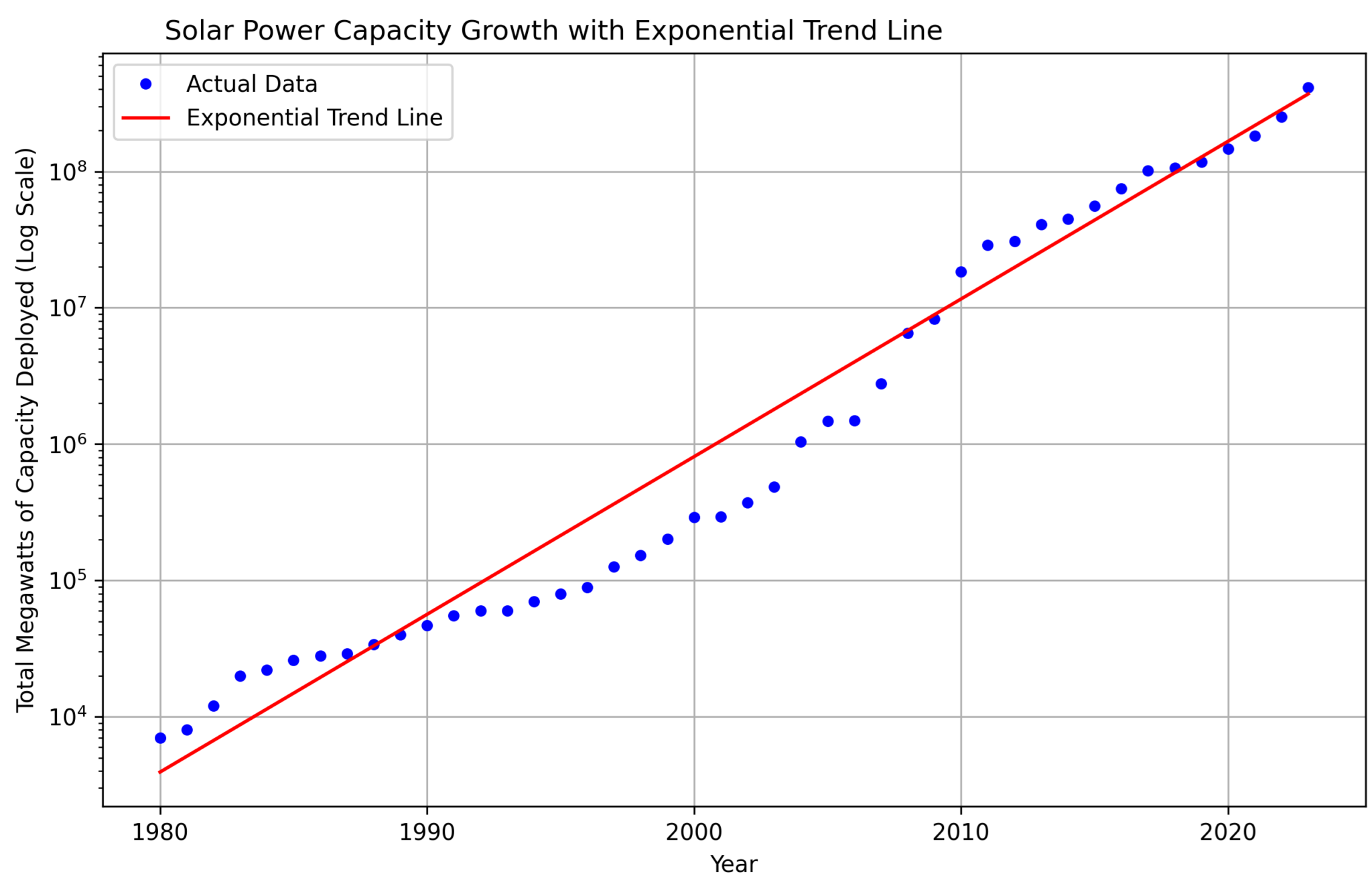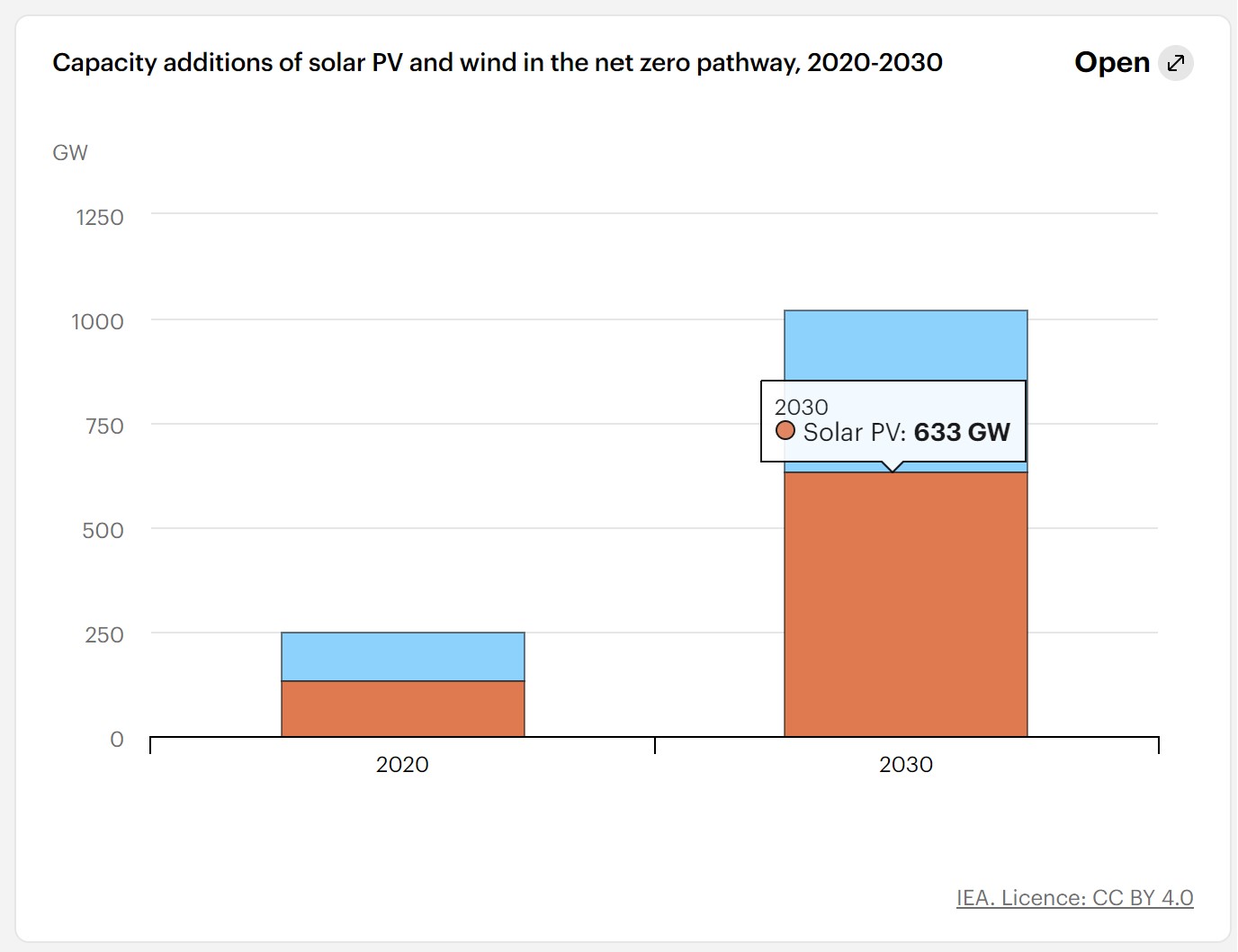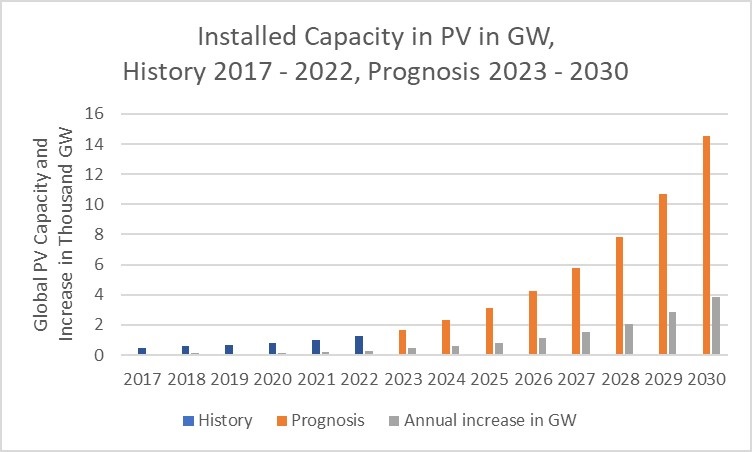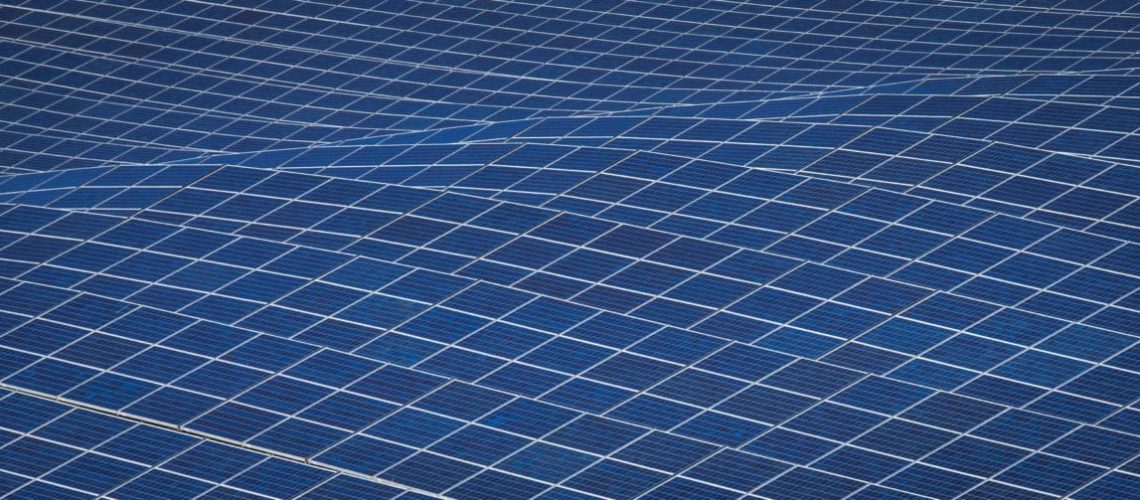Climate change’s varied and often lethal manifestations pose a growing concern for our global civilization. As we face these escalating challenges, it’s crucial for our societies to prepare for more significant and complex hurdles ahead. Yet, amidst these daunting scenarios, a glimmer of hope emerges in the accelerating deployment of solar energy technology.
Global solar power deployments have been growing at a pace envisioned only by the boldest technology futurists – such as those in Ray Kurzweil’s ‘The Singularity is Near’ – have been able to predict. In the three years from 2021 through the end of 2023, installed solar capacity skyrocketed from 182 GW to a projected 413 GW. This growth trajectory represents an increase of more than 400% since 2017, nearly tripling since 2020, and more than doubling since 2021. The surge from 2022 to 2023 alone signifies an increase of over 50%.
Data from BloombergNEF confirms that this trend is exponential, most recently due to massive deployments in China. This growth is crucial for the global shift to clean energy, and various analyses suggest that such rates are now capable of mitigating the most severe impacts of climate change.

Recent assessments that indicated the energy transition was lagging are now being revisited in light of these developments. Released this summer, IRENA’s World Energy Transitions Outlook report showed that the 191 GW added in 2022 fell short of the Paris Agreement’s 1.5°C target. The report called for significant increases, targeting “551 GW annually by 2030, and 615 GW annually by 2050.”
Yet, with projections of 413 GW in 2023 and an expected 500 to 600 GW in 2024, it appears these ambitious targets may not just be achievable, but surpassed.
This trend is also recognized by global energy authorities. Fatih Birol, the Executive Director of the International Energy Agency, who has been known to underestimate the expansion of solar deployment, acknowledged:
Over the past two years, their global deployment has been fast enough to align fully with the rate envisaged in the IEA’s ambitious Pathway to Net Zero emissions by 2050.
The IEA now projects that to meet global climate goals, approximately 633 GW per year will be needed by 2030, a target that could be achieved as soon as next year.

Source: IEA
According to research from the Rocky Mountain Institute, “eight countries have already grown solar and wind generation faster than what’s needed to limit global warming to 1.5°C, proving that a rapid transition to renewable energy is possible.” According to their analysis, solar and wind are forecast to increase from approximately 12% of global electricity generation at the end of 2022, to over a third by 2030.
This analysis by the Rocky Mountain Institute was released before the massive surge in deployment in 2023.
The Overton Window
As these ambitious projections and advancements in solar technology shift the realm of what’s considered possible, we enter the domain of the Overton Window. This concept, often used to describe the range of policies politically acceptable to the mainstream population, can also apply to the evolving perception of solar energy’s potential.
And, frankly, some of these projections are astounding to contemplate.
Longi Solar, the world’s largest solar module manufacturer, sees a potential 1 TW of solar deployed annually by 2030. China has already established the manufacturing capacity necessary to support such a significant volume.
Christian Breyer, Professor for Solar Economy at the Lappeenranta University of Technology in Finland, along with his team, has demonstrated the economic feasibility of a global energy market wholly reliant on renewable energy. Their research suggests that with an anticipated global installed capacity of around 63.38 TW, solar energy could constitute as much as 69% of the world’s primary energy supply by the midpoint of this century.
Currently, the world’s electricity generation capacity stands at around 9 TW, contributing about 20% of the total global primary energy.
In late 2022, at the Forum New Energy World, Breyer asked if it might be possible to install up to 3 TW of capacity a single year. He challenged the audience to consider whether such a target would be “crazy, realistic, necessary, or maybe even too low.”
However, the terminally optimistic futurists may actually be the ones grounded in empirical analysis, and they’re already asking a much wilder question: are we about to witness 3 TW of capacity deployed annually – by the end of this decade?

Source: Uwe Dahlmeier
Uwe Dahlmeier of DR Dahlmeier Financial Risk Management AG recently forecasted that by 2030, global solar deployments could exceed 14 TW, implying a doubling of capacity approximately every two years.
Dahlmeier explains, “Based on empirical evidence, the long-term global exponential trend for solar is unlikely to slow down before the end of the decade and probably not before 2034, if only due to the favorable prices of solar power from new systems.”
His team’s analysis outlines the expected yearly volumes to sustain this growth, starting from 1.69 TW at the end of 2023:
- 2024 – 0.6 TW
- 2025 – 0.83 TW
- 2026 – 1.12 TW
- 2027 – 1.53 TW
- 2028 – 2.08 TW
- 2029 – 2.82 TW
- 2030 – 3.84 TW
Breyer notes, “No single energy technology ever in history has grown as massively steeply as photovoltaics.”
Before dismissing these numbers as outlandish, remember: just one year ago, pv magazine USA editors thought that asking for 400 GW of solar for Christmas was overly ambitious. This Christmas, it’s already a realistic milestone.



